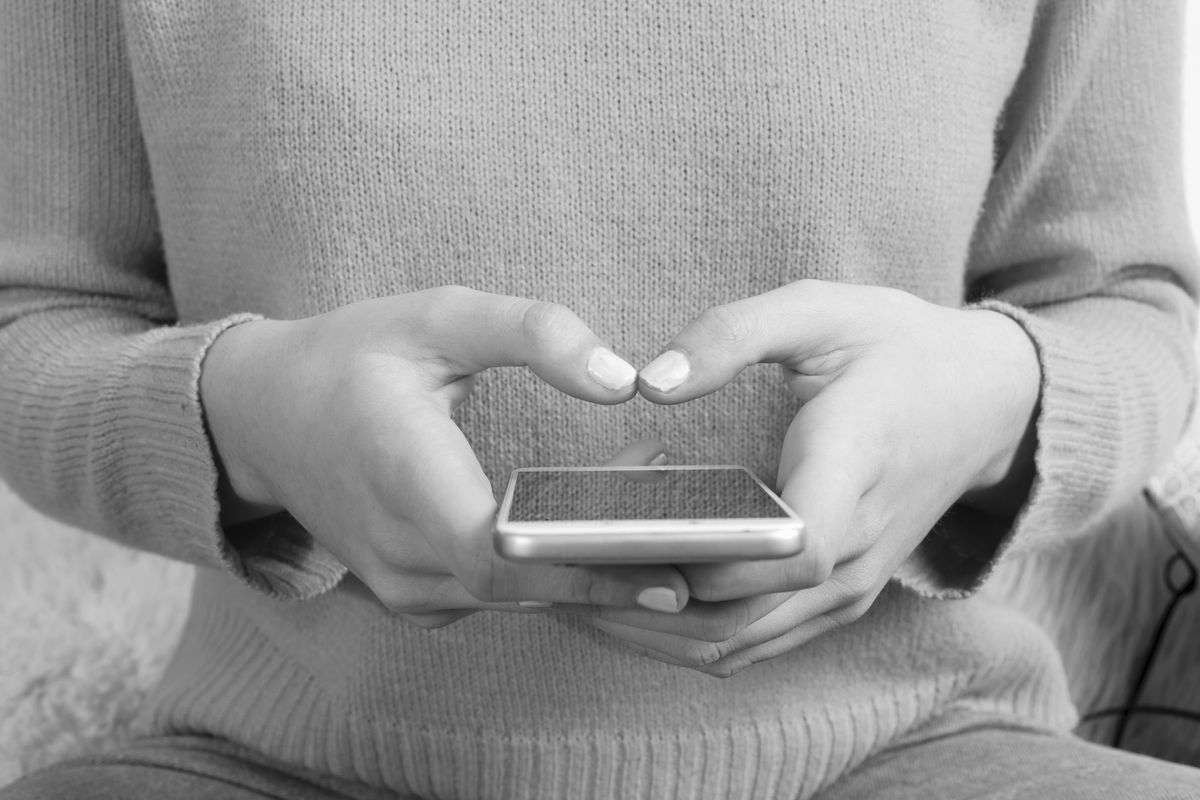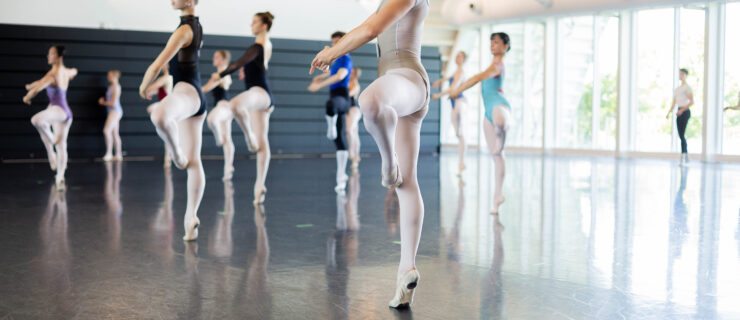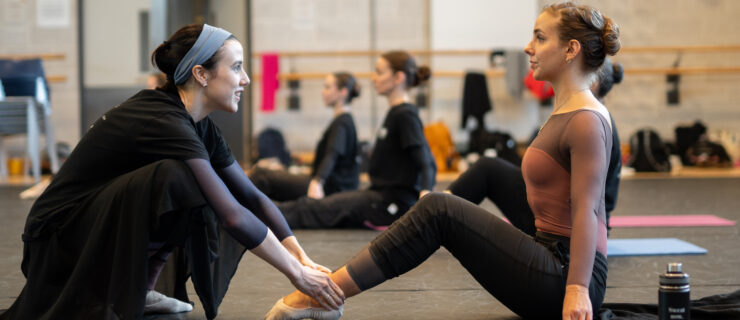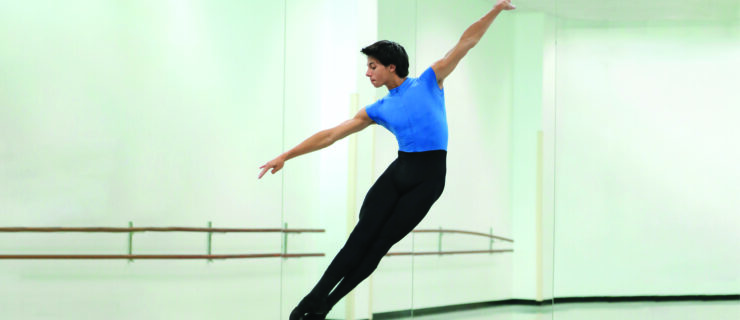Staying Safe on Social Media: Watch Out For These Warning Signs
In the summer of 2017, Ana Denton received a direct message from a prominent dance photographer. Denton did not know him, though she was familiar with his photography. At first, he was curious to know where she lived and expressed interest in traveling down to her in Philadelphia, to do a photo shoot in her apartment. “I didn’t have any hesitations or weird feelings, but I also didn’t want somebody I never met before in my apartment,” she says. As a young, aspiring ballerina, she was more comfortable with his second idea: that Denton take a day trip to New York City—something she did all the time for classes and auditions—for a photo shoot in Tompkins Square Park. He was Insta-famous, with thousands of followers and a feed of beautiful images. “He had photographed so many professional dancers that I loved and looked up to,” says Denton.
There is nothing particularly unusual about the situation Denton found herself in. Anyone with a social media account can receive a direct message from a stranger. For a dancer, that could include fans and admirers, photographers, choreographers, even potential directors. Some of these messages or new opportunities may be just that: remarkable connections across long distances courtesy of our flattened world. But others may be predatory or exploitative. Either way, these situations always deserve some caution.
Unfortunately, Denton’s photo shoot did not end well. Using Instagram’s story feature, she posted about her experience two years later (when she had started hearing stories of similar situations from friends in her inner circle). She used the platform to go public with allegations that he sexually assaulted her later that day, after inviting her to his apartment to go through photos. Immediately, other women reached out to her with similar allegations, which she added to her Instagram story. The mass call-out went viral, and, soon after, the photographer deleted his Instagram account.
Understanding the Power Dynamic
In a small, competitive industry like ballet, it can be hard to trust your instincts and say no to an opportunity. “The whole culture of ballet is to listen to people, and you’ve been taught your entire life to defer to the authority figure,” says Lindsay Thomas, a company photographer for Pacific Northwest Ballet. “Even if you are physically uncomfortable, dance is about pushing yourself physically and mentally. And then you take a young dancer and put them in a situation where there is a person of authority asking them to do something [uncomfortable]. It’s very easy to be taken advantage of in this kind of situation.”
This isn’t a new issue; ballet’s past is not without awful instances of exploitation, stories of dancers being preyed upon and manipulated by directors, patrons and teachers. More recently, former students of the Royal Winnipeg Ballet’s affiliated school filed a class-action lawsuit against the company and former faculty member Bruce Monk, who they say pressured young dancers into taking topless photos. And in August, The Royal Ballet suspended artist in residence Liam Scarlett after allegations emerged that he shared sexual messages with Royal Ballet School students via Facebook (after an investigation, the company announced in March 2020 that there were no matters to pursue, yet officially cut ties with the choreographer). The problem is complex because dance training that centers on obedience can stifle a young person’s awareness of their own instincts, or make them feel they can’t say no.

Check References
Like other talented athletes and performing artists, dancers naturally attract interest from the outside world. “With social media now, it is super easy to be discovered,’ ” says Lia Cirio, a principal dancer with Boston Ballet. But whether a direct message is from a photographer, a brand marketer or a choreographer promising a gig, her advice is the same: “Do your research. Make sure you trust these people.”
Many companies and schools have handbooks and guidelines for how to engage with side gigs, photographers and social media in general, including channels for routing such requests. “When our students or second company members are approached, we recommend all requests go through our marketing department,” says Sharon Story, dean of Atlanta Ballet Centre for Dance Education. “Even if they are over 18 and it is a shoot for personal purposes, we always recommend they check into the backgrounds of any photographer and never go somewhere with someone they don’t know alone.”
If you are a freelancer or don’t have access to these institutional resources, do your own vetting before moving forward with someone new or unknown. Don’t rely on the number of someone’s social media followers—call local dance schools and companies to find recommendations. Or reach out to other dancers for feedback on their experience with a photographer or potential employer.
You can also set up an introductory call to learn more: Where will the gig, shoot or meeting happen? How long will it take? What will you be expected to wear? Whether or not you prefer to set your own limits regarding time commitment, meeting spot and wardrobe up front, the call’s main goal is to make sure there is a set of shared expectations that are clear for both parties. “Ask if you can bring a parent or friend,” Thomas says, “and the answer should always be a quick and resounding yes.” If not, this is definitely a sign that something is off.
For Nadia Vostrikov, such an introductory call saved her from falling prey to financier Jeffrey Epstein, whom The New York Times later reported had sexually assaulted several dancers after soliciting them for private workouts and dance lessons. (Epstein, now deceased, is still the subject of criminal lawsuits alleging sex trafficking of minors.) A dancer she met in the bathroom of a New York City dance studio asked Vostrikov in 2013 if she would be interested in taking over a well-paying private teaching gig for her. “I was new to New York and that’s just how dancers generally make connections,” says Vostrikov. But warning signs emerged early in an introductory Skype meeting with Epstein: He was a registered sex offender and the job would require her flying down to Florida on his private plane. She passed on the $150-an-hour job, even though she says the referrer insisted he was a nice man.
Vostrikov’s experience gives insight into the complicated nature of getting references. Not everyone’s experience with someone will be the same. And it can take time, sometimes years, for victims to process their trauma and actively speak out as Denton did. Yet, it is still important to find out as much as you can.

Getty Images
Make a Plan
Cirio takes precautions before she shoots with new photographers. “I definitely make sure to meet up in a public space or have a friend come along,” she says. “Most of my more ‘intimate’ shots—for example, in my home or just me in a studio—were done by photographers with whom I have a good relationship or are friends.”
Make sure someone who cares about you knows where you are and ask them to check in with you at a set time. Suggestive comments, oversharing and any inappropriate touching are all warning signs. If the mood shifts, or if the event is changing locations or veering off course, don’t be afraid to firmly say no to a suggestion that makes you uneasy. “To be put in that situation, where you’re forced to stand up for yourself…it’s just not as easy as everyone thinks it is,” says Thomas. But she and others stress that it is okay to leave something in progress if someone is making unwanted advances or making you feel uncomfortable. Make up an excuse if you need to—your safety is more important.
“I think the advice that I would give to my younger self is to listen to the hesitation I felt before going up to his apartment,” says Denton. “And I think that a warning sign can be absolutely anything you feel, where there is a shift in the mood or how a person is treating you, or a shift in the tone of how they’re speaking to you.”
If It Happens to You
Tell someone you trust as soon as you can, such as a friend, parent or teacher. “If someone reported an incident to me,” says Sharon Story, dean of Atlanta Ballet Centre for Dance Education, “I would reach out to the parents first, if they are underage, and then I would immediately report the incident to human resources, the executive director and the police.”
If you are physically injured or suffering mental and emotional distress from trauma, seek immediate medical help and consult a licensed social worker. And while Ana Denton does not regret telling her story on Instagram, there are other ways to report harassment or assault, such as through legal counsel or by filing a police report. Visit dance.nyc and publictheater.org for a robust list of resources for performing artists regarding sexual harassment.





